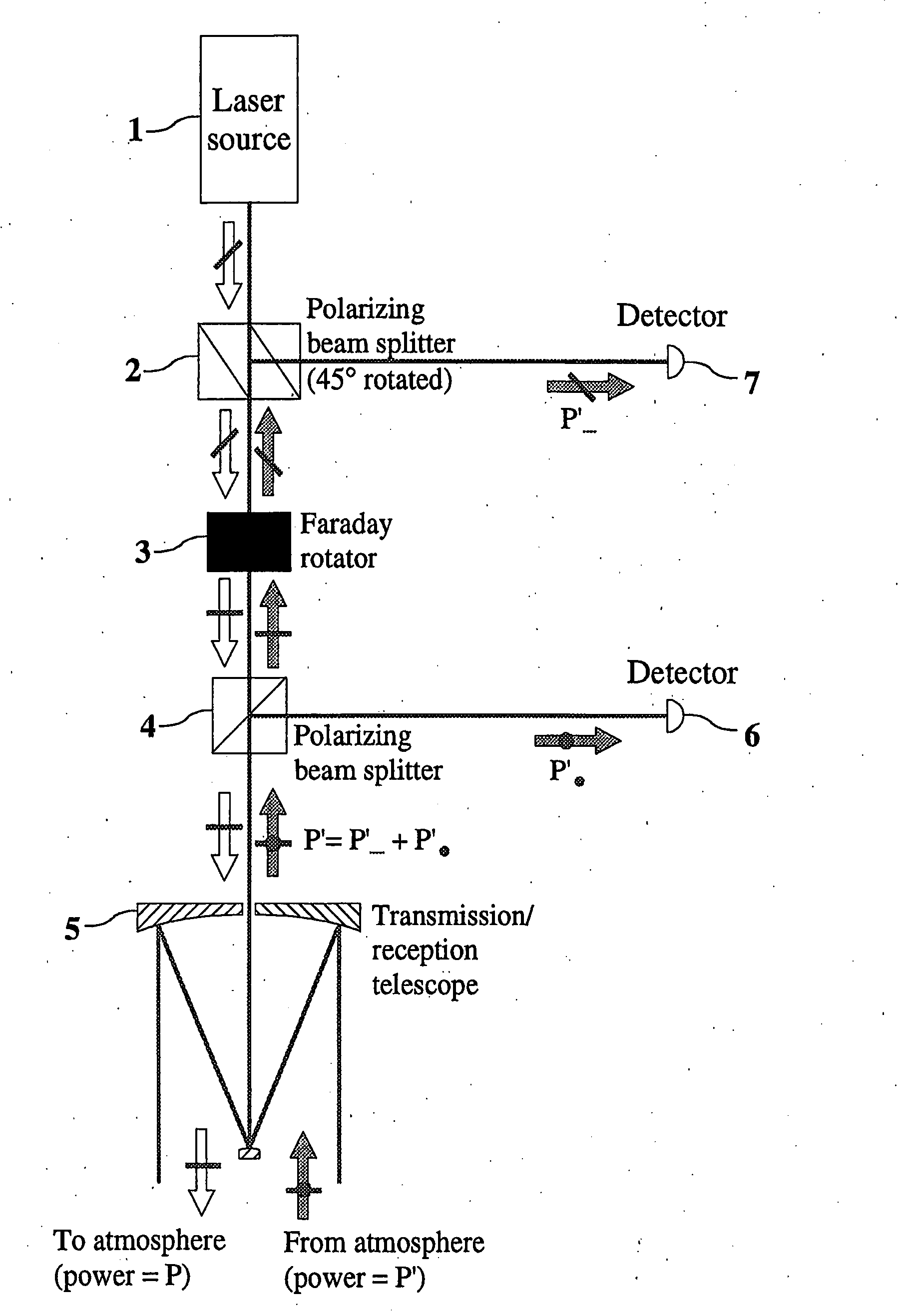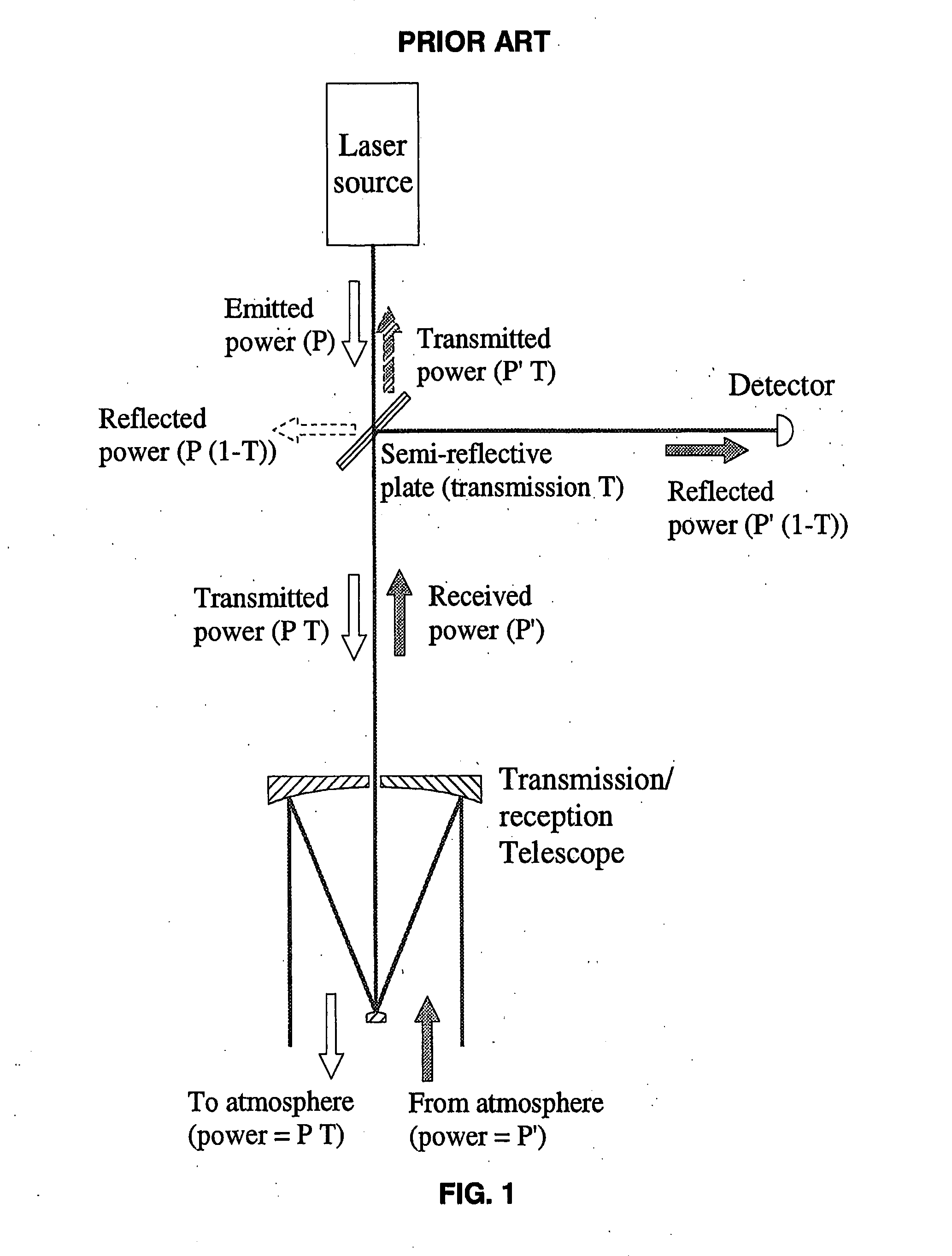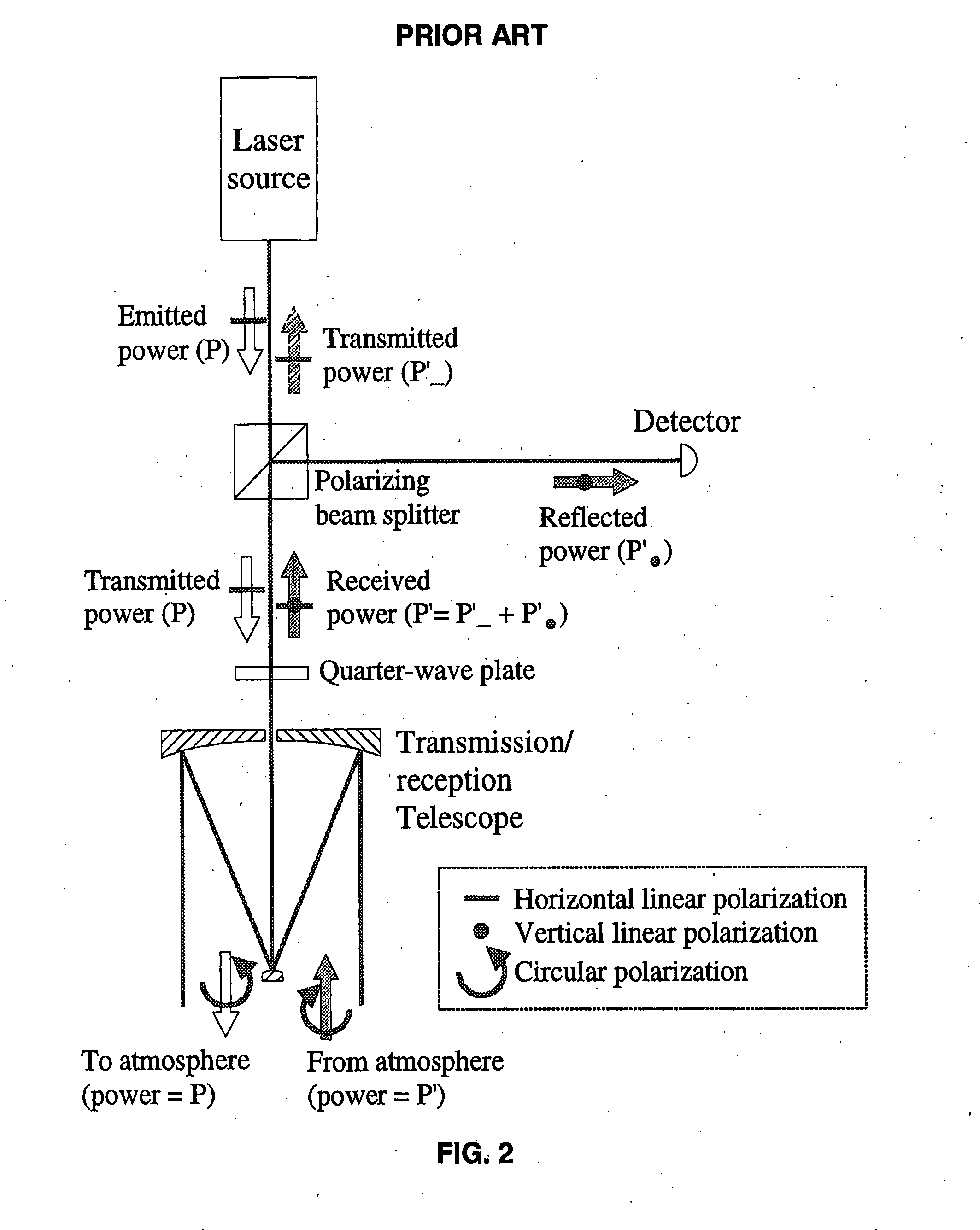Beam Separation Apparatus for Monostatic Lidars
a monostatic lidar and beam separation technology, applied in instruments, distance measurement, climate sustainability, etc., can solve problems such as power loss
- Summary
- Abstract
- Description
- Claims
- Application Information
AI Technical Summary
Benefits of technology
Problems solved by technology
Method used
Image
Examples
Embodiment Construction
[0026]FIG. 4 shows the scheme of a monostatic LIDAR including the beam separation system, according to the present invention. The laser source 1 emits a beam of power P, with a linear polarization lying in a plane rotated through an angle of 45° with respect to the plane of the optical bench (assumed as reference plane). The beam encounters the first polarizing beam splitter 2, also rotated through an angle of 45° with respect to the optical bench, so that the incoming polarized light is substantially all transmitted. The correct orientation of the polarizing beam splitter 2 is shown in FIG. 5. The Faraday rotator 3 is placed after the polarizing beam splitter 2. It rotates the laser beam polarization plane through an angle of 45° in counter clockwise direction so as to make it parallel to the optical bench plane (“horizontal” polarization). The third polarizing beam splitter 4 is placed after the Faraday rotator 3 with its faces parallel to the optical bench, oriented so that the h...
PUM
 Login to View More
Login to View More Abstract
Description
Claims
Application Information
 Login to View More
Login to View More - R&D
- Intellectual Property
- Life Sciences
- Materials
- Tech Scout
- Unparalleled Data Quality
- Higher Quality Content
- 60% Fewer Hallucinations
Browse by: Latest US Patents, China's latest patents, Technical Efficacy Thesaurus, Application Domain, Technology Topic, Popular Technical Reports.
© 2025 PatSnap. All rights reserved.Legal|Privacy policy|Modern Slavery Act Transparency Statement|Sitemap|About US| Contact US: help@patsnap.com



